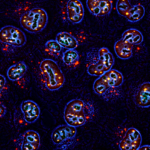Link to Pubmed [PMID] – 2153268
Nature 1990 Jan;343(6254):177-80
Retinoic acid, the first morphogen described so far in vertebrates, is a vitamin A derivative which exerts striking effects on development and differentiation. The identification of three retinoic acid receptors as members of the nuclear receptor super-family provides an explantation for the molecular action of morphogens on gene expression. Functional analysis of the receptors requires the identification of target genes and of their cis-acting retinoic acid-responsive elements. We have previously shown that the retinoic acid receptor beta gene is transcriptionally up-regulated by retinoic acid and now report the characterization of a functional retinoic acid responsive element in the beta gene that mediates trans-activation by retinoic acid. Using deletion mapping, we have identified a 27-base pair fragment, located 59 base pairs upstream of the transcriptional start, which confers retinoic acid responsiveness on the herpes virus thymidine kinase promoter. This sequence contains a perfect direct repeat of the motif GTTCAC, which is reminiscent of the 5′ half-palindrome of the thyroid and oestrogen hormone responsive elements. Specific binding of the beta protein to the retinoic acid responsive element is demonstrated and is independent of the presence of retinoic acid. Both alpha and beta receptors enhance retinoic acid response in CV1 cells, indicating that they can both act through the same DNA sequence.

